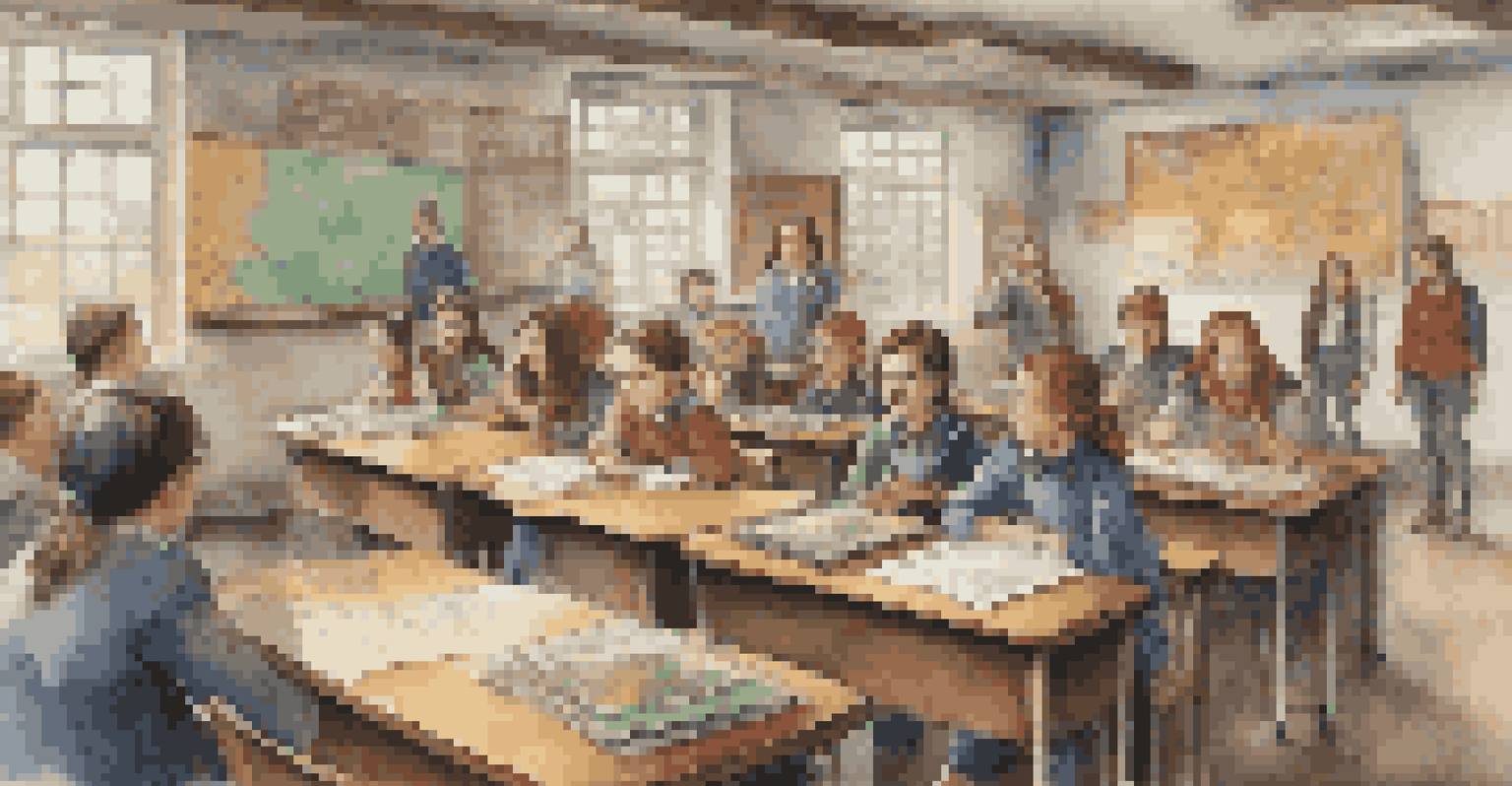Using Role-Playing to Teach Conflict Resolution Skills

Understanding Conflict Resolution and Its Importance
Conflict resolution involves techniques and strategies to handle disagreements effectively. It’s crucial not just in personal relationships but also in professional settings. By learning to resolve conflicts, individuals can foster better communication and collaboration.
The most important thing in communication is hearing what isn't said.
Imagine a workplace where employees can address their differences calmly and constructively. This creates a positive atmosphere that encourages creativity and teamwork. In contrast, unresolved conflicts can lead to a toxic environment, diminishing morale and productivity.
Ultimately, mastering conflict resolution skills can lead to healthier relationships and a more harmonious life. This is where role-playing comes in as a practical and engaging method to teach these essential skills.
What Is Role-Playing and How Does It Work?
Role-playing is a dynamic learning technique where individuals act out scenarios to practice specific skills. It allows participants to step into another person’s shoes, fostering empathy and understanding. This immersive experience can significantly enhance learning retention.

For example, in a role-playing exercise, one person may take on the role of an upset customer while another plays the role of a service representative. By navigating this interaction, participants can explore various responses and their potential outcomes. This hands-on approach makes the learning experience memorable.
Conflict Resolution is Essential
Effectively resolving conflicts is crucial for fostering better communication and collaboration in both personal and professional relationships.
The beauty of role-playing lies in its versatility. It can be tailored to different contexts, making it suitable for classrooms, workshops, or team-building exercises. This adaptability is key to its effectiveness in teaching conflict resolution.
Setting Up a Role-Playing Scenario for Conflict Resolution
To create an effective role-playing scenario, first identify a relevant conflict situation. This could be based on real-life examples or common issues faced in specific environments. By ensuring the scenario is relatable, participants will be more engaged and invested in the exercise.
Conflict is inevitable, but combat is optional.
Next, clearly outline the roles and objectives for each participant. For instance, one person could represent a colleague with a differing opinion, while another may act as a mediator. Providing guidelines helps participants understand their roles and encourages them to think critically about their approach.
Lastly, encourage open communication during the role-play. After the exercise, hold a debriefing session where participants can share insights and reflect on their experiences. This feedback loop will reinforce the learning and highlight areas for improvement.
Benefits of Role-Playing in Conflict Resolution Training
One of the primary benefits of role-playing is that it promotes active learning. Participants aren’t just passive observers; they are engaged in the process, which enhances their understanding of conflict dynamics. This active involvement leads to better retention of the skills learned.
Additionally, role-playing encourages participants to practice empathy. By stepping into someone else’s shoes, individuals can better appreciate different perspectives, which is crucial in resolving conflicts. This heightened empathy can lead to more compassionate and effective communication.
Role-Playing Enhances Learning
Role-playing allows participants to practice conflict resolution skills in a safe environment, promoting empathy and active engagement.
Finally, role-playing provides a safe space for individuals to experiment with new strategies. Mistakes can be made without real-world consequences, allowing for growth and exploration. This safety net empowers participants to take risks and develop their conflict resolution skills.
Common Challenges in Role-Playing Exercises
Despite its benefits, role-playing can pose challenges. One common issue is participant reluctance to engage fully. Some may feel uncomfortable stepping out of their comfort zone or fear judgment from peers. Creating a supportive environment is essential to alleviate these concerns.
Another challenge is ensuring that scenarios remain realistic and relevant. If a role-play feels too contrived or disconnected from real life, participants may disengage. This underscores the importance of carefully crafting scenarios that resonate with the audience’s experiences.
Lastly, time constraints can limit the depth of role-playing exercises. Participants may rush through scenarios, hindering their ability to fully explore the conflict. Allocating sufficient time for both the role-play and debriefing is crucial for meaningful learning.
Integrating Role-Playing into Educational Settings
Educators can effectively integrate role-playing into their curricula to teach conflict resolution. By incorporating this method into classroom discussions or group projects, students can develop essential life skills while learning subject matter. This hands-on approach makes lessons more engaging and applicable.
For instance, teachers can assign role-playing activities related to historical events, allowing students to explore different viewpoints. This not only enhances their understanding of the subject but also fosters critical thinking and empathy. By connecting conflict resolution skills to academic content, learning becomes holistic.
Feedback Improves Training Outcomes
Gathering feedback and observing participants during role-play exercises are vital for evaluating effectiveness and refining future training.
Moreover, schools can organize workshops focusing specifically on conflict resolution through role-playing. These sessions can equip students with tools to navigate interpersonal challenges, setting them up for success in both personal and professional contexts.
Evaluating the Effectiveness of Role-Playing
To gauge the effectiveness of role-playing in teaching conflict resolution, feedback is crucial. Participants can provide insights on their experiences, highlighting what worked and what didn’t. This feedback loop can help refine future exercises and ensure continuous improvement.
Additionally, instructors can observe participants during role-plays, noting their interactions and responses. This observation can uncover areas where individuals excel or struggle, informing targeted support and guidance. Evaluating performance in real-time can enhance the overall learning experience.

Finally, follow-up assessments can be conducted to determine if participants apply their newfound skills in real-life situations. This long-term evaluation helps to measure the lasting impact of role-playing on conflict resolution capabilities, ensuring that the training translates into tangible results.